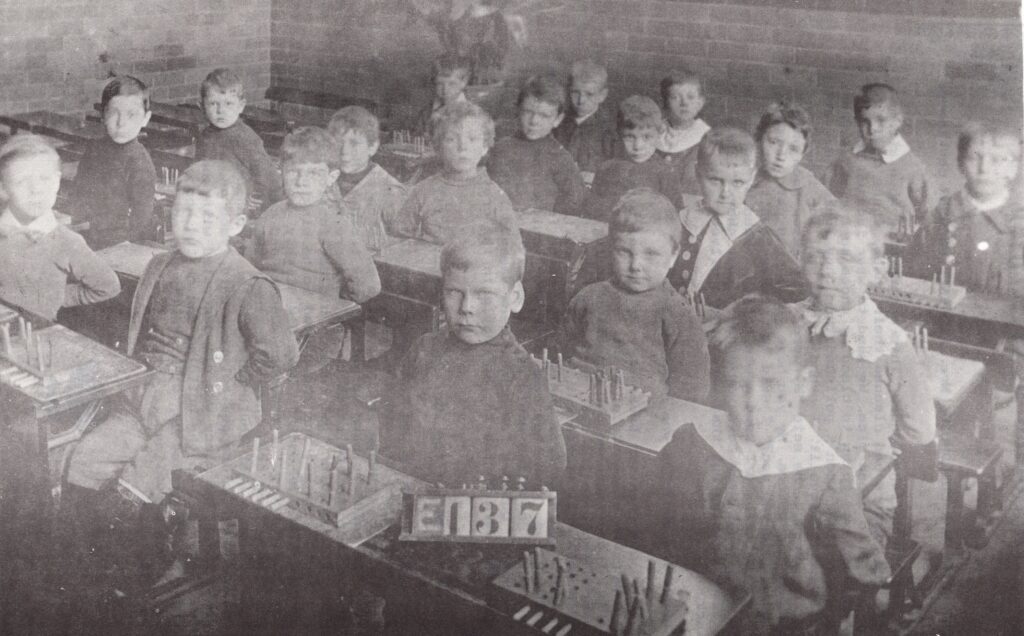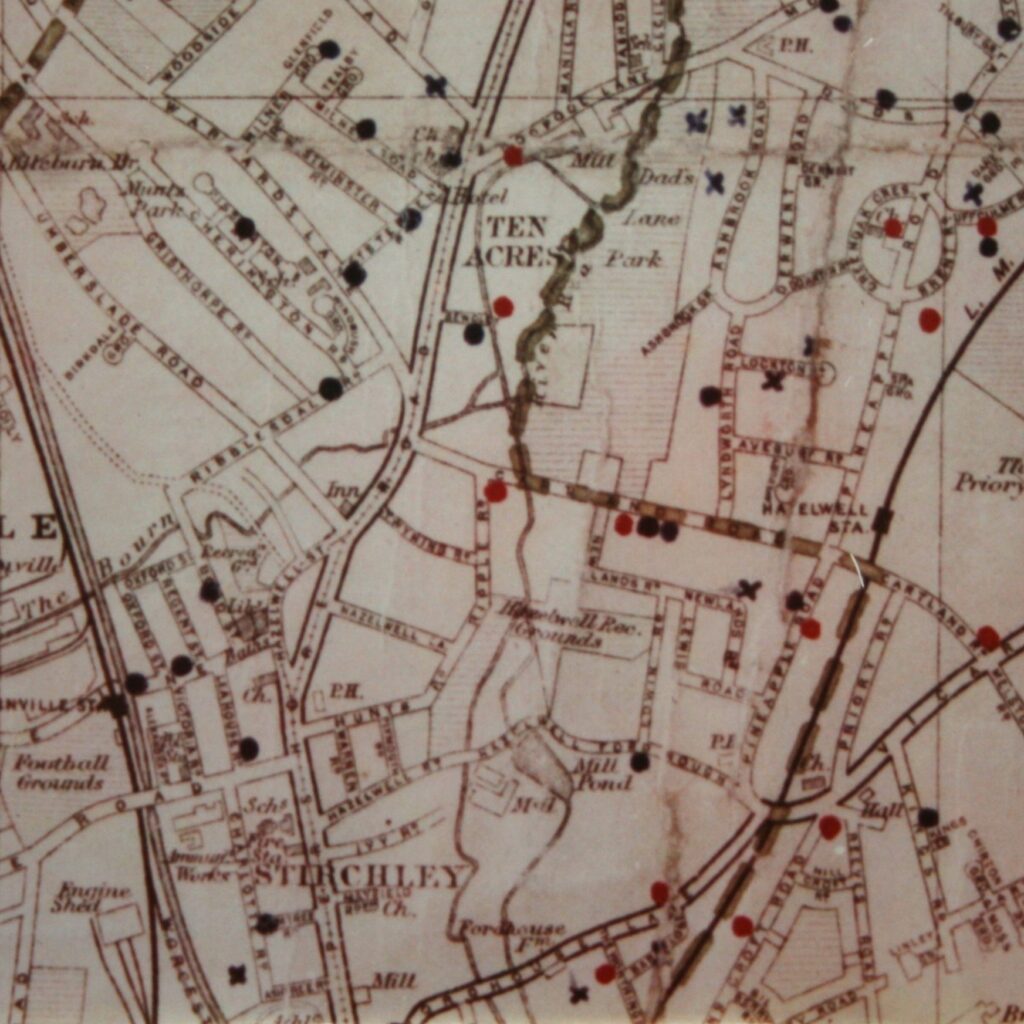
Some more from the “Memories of Stirchley” gathered from local people in the 1980s. These are memories of Stirchley School and childhood during the Second World War, taken from Ron Allcock, Pat Collins, and Ivor Gornall. All three attended Stirchley School from 1940, and left between 1945 and 1948. The photograph shows the school over twenty years previously (we couldn’t find many pictures of Stirchley during WW2).
Early in the War when the children were evacuated, school was held in private houses but the children soon returned to Stirchley. During the War, it was considered unsafe to use the one-storey school so all the classes were put together in the Charlotte Road building. All the lower floor windows were sandbagged and blast walls built to protect the doorways.
The classes were large with fifty plus children. Miss Coles was the head of the Junior and Infant, Mr. Cook (senior) then his son J. E. Cook was head of the Senior School (up to leaving age, 14). They were both excellent teachers. The teachers were mainly pensioners called back or men invalided out of the services. Mr. Roberts had been invalided out of the Commandos and he still had a presence – he was treated by the boys to be unstable and was treated with care. “Foggy” Burns had been gassed in the first war and wore very thick lensed glasses. He taught science and was considered a soft option because he could easily get sidetracked to talk of more interesting subjects. Billy Ward ran the “Digging for Victory”. The children tended allotments at the bottom of Hunt’s Road. The Pershore Road School was the Science and Woodwork block. Freddy Wheeler and W. Kneale taught there.
The children vividly remember carrying gas masks and practising Air Raid Precautions. The Auxiliary Fire Service was based in the Billiard Hall near the Three Horse Shoes [now the Bournbrook Inn]. The Home Guard Rifle Range was the bottom of the Cadbury tip. When there was an air raid and houses in Elm Tree Road were hit the children went shrapnel hunting and collected a good bounty. A popular game at school was to run across the playground and empty it as all the children tried to crowd between the blast wall and the door. School milk at the midmorning break then cost 2 1/2 old pence a week.
Because of the blackout the traditional fair in Hazelwell Recreation Ground was held under canvas cover. [There was a] carnival in Cotteridge Park in which local bands competed against one another. The winner in 1942 was a band which produced a spectacular battleship while playing Rule Britannia. At Christmas the Co-op bakery distributed lemon buns to all the children in school.
The older children were taken on industrial visits to Cadbury’s, the Austin, public utilities and transport. The school had a good record of placing pupils in employment. When the children left school at 14 they were still too young to enter the armed services.

Above is a map of bombs dropped on Stirchley in one night during World War 2 (held at Birmingham Archive).